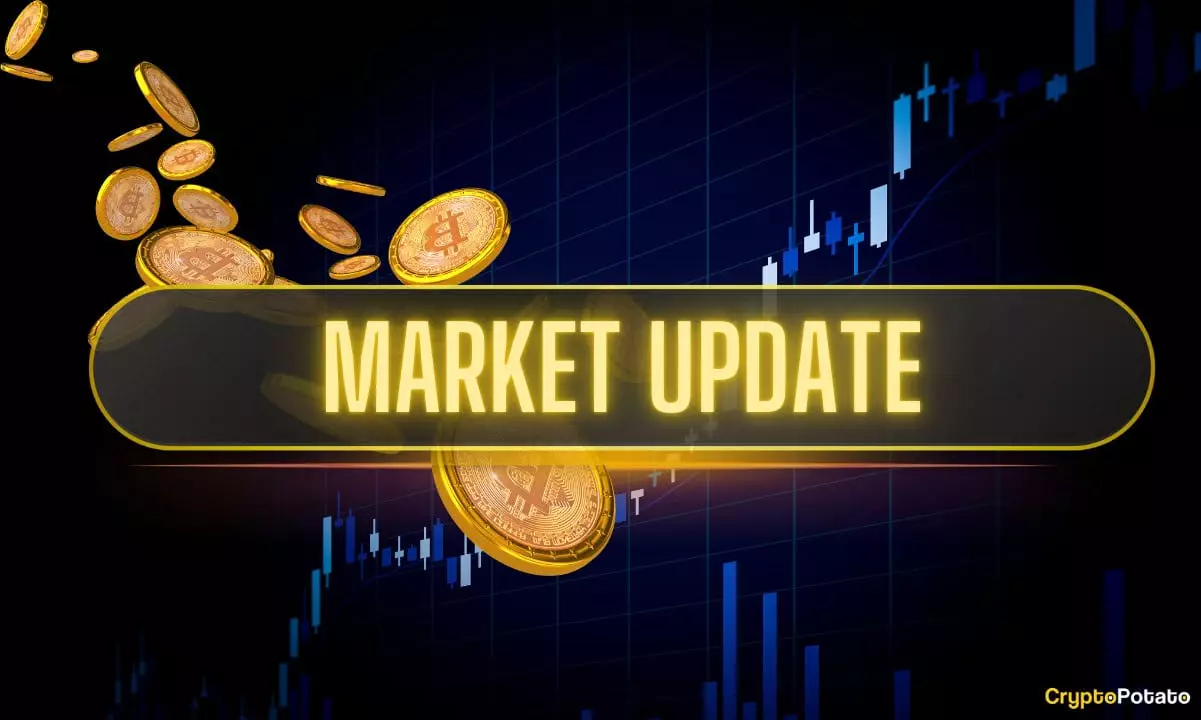The last week in cryptocurrency felt far less explosive than some previous periods, yet it revealed a few pivotal moments that have set the stage for ongoing volatility. Bitcoin (BTC), the cornerstone of the crypto market, showcased a behavior typical of its nature—thrilling highs followed by gut-wrenching lows. After weathering considerable fluctuations owing to the Federal Reserve’s recent inaction and Ripple’s mixed results against the SEC, Bitcoin’s price settled around $84,000 at the start of the weekend. A promising trajectory brought it close to hitting $89,000 on Monday, marking what seemed like a triumphant rebound.
But just as quickly, Bitcoin experienced a steep decline, once again reminding investors of the capricious nature of cryptocurrencies. As the week waned, it was disheartening to observe BTC fall below the critical threshold of $86,000, leading to whispers of despair amongst traders as they faced the disappointing reality of erasing gains from earlier in the week. It’s as if Bitcoin serves as a constant reminder of the risks involved in this market; a surge followed by a sharp nosedive can turn fortunes in mere hours. The inability to hold value comes as a critical warning, suggesting that what goes up undeniably must come down—and usually harder than anticipated.
Ripple’s Legal Saga: A Pyrrhic Victory
In what might have been perceived as a decisive moment for Ripple, the company’s Chief Legal Officer recently announced that they would be dropping their appeal against the SEC. This news should have sent waves of positivity rippling through the XRP community. However, to the astonishment of many, XRP’s value lagged with an embarrassing 8% dip over the week. Failing to capitalize on what could have been an empowering pivot exposes a troubling underlying trend: the market’s impatience for actionable progress rather than mere announcements. Amidst a sea of speculation, it’s clear that Ripple’s legal victory has not translated into the expected market enthusiasm—demonstrating how trust in regulatory outcomes can be tenuous in the crypto landscape.
Amidst all this, alternative cryptos have been grabbing headlines, showcasing how the market can turn its back on even the most iconic assets in favor of newer options like TON and SUI. Bitcoin and XRP’s disappointments have apparently become a launching pad for growth in lesser-known digital currencies. This reality begs the question: is the crypto space evolving more rapidly than the legacy giants can adapt?
Market Sentiment and Future Hopes
Despite Bitcoin’s rough week, interesting trends are taking place in the broader market that deserve attention. The outflows of BTC signal potential bullish trends brewing beneath the surface, even amidst recent profit-taking behaviors. Investors are cautiously optimistic, sensing that the tide could change as macroeconomic factors stabilize. The growing acceptance of Bitcoin, showcased by GameStop’s audacious $1.3 billion acquisition plan, further solidifies Bitcoin’s position in mainstream finance as investors see it as more than just a speculative gamble.
It raises an important consideration: could we be on the verge of a resurgence? The stabilization of spot Bitcoin ETF flows, noted by experts, could serve as a critical juncture for valuations moving forward. If institutional investors begin embracing Bitcoin more fervently, sustained upward momentum could very well be in the cards, albeit with the understanding that any fluctuations could be jarring.
Cryptocurrency Exchange Dynamics
Interestingly, this week also marked a noteworthy moment for Crypto.com, which saw its token, CRO, surge by an astounding 40% after the announcement of a partnership with Trump Media for ETF provisions. This development, though controversial due to its political entanglements, reflects how intertwined the realms of politics and cryptocurrency can be. Such partnerships illustrate that legitimacy and acceptance in traditional finance may hinge on engaging with influential figures and entities, regardless of their polarizing reputations.
These dynamics compel us to consider the implications of traditional advisors at play in the crypto space. Are these connections something to be celebrated as bridges into institutional recognition, or should we be wary of the political ramifications that could ensue? The constant tug-of-war between innovation and regulation will remain a defining theme in the evolution of cryptocurrencies, and it is critical to monitor how these alliances may shape the future of both the market and investor sentiment.
The Ripple Effect on Infrastructure
Amid these highs and lows, fundamental aspects of the crypto ecosystem are evolving as well. Institutional investment is reshaping market dynamics, challenging traditional structures and creating new paradigms for value and trust. Increased investor interest in cryptocurrencies, driven by technological advancements and regulatory clarifications, shows a shift toward sophistication in trading strategies. Investors are beginning to recognize the volatility for what it is—a hallmark of a nascent asset class rather than a reason to dismiss it entirely.
The cryptocurrency landscape remains tumultuous yet full of potential. As we sift through the wreckage and celebrate the victories, it’s essential to gauge the readjustment of market trust, regulatory clarity, and the pace at which digital assets are being integrated into our economic fabric.


Leave a Reply